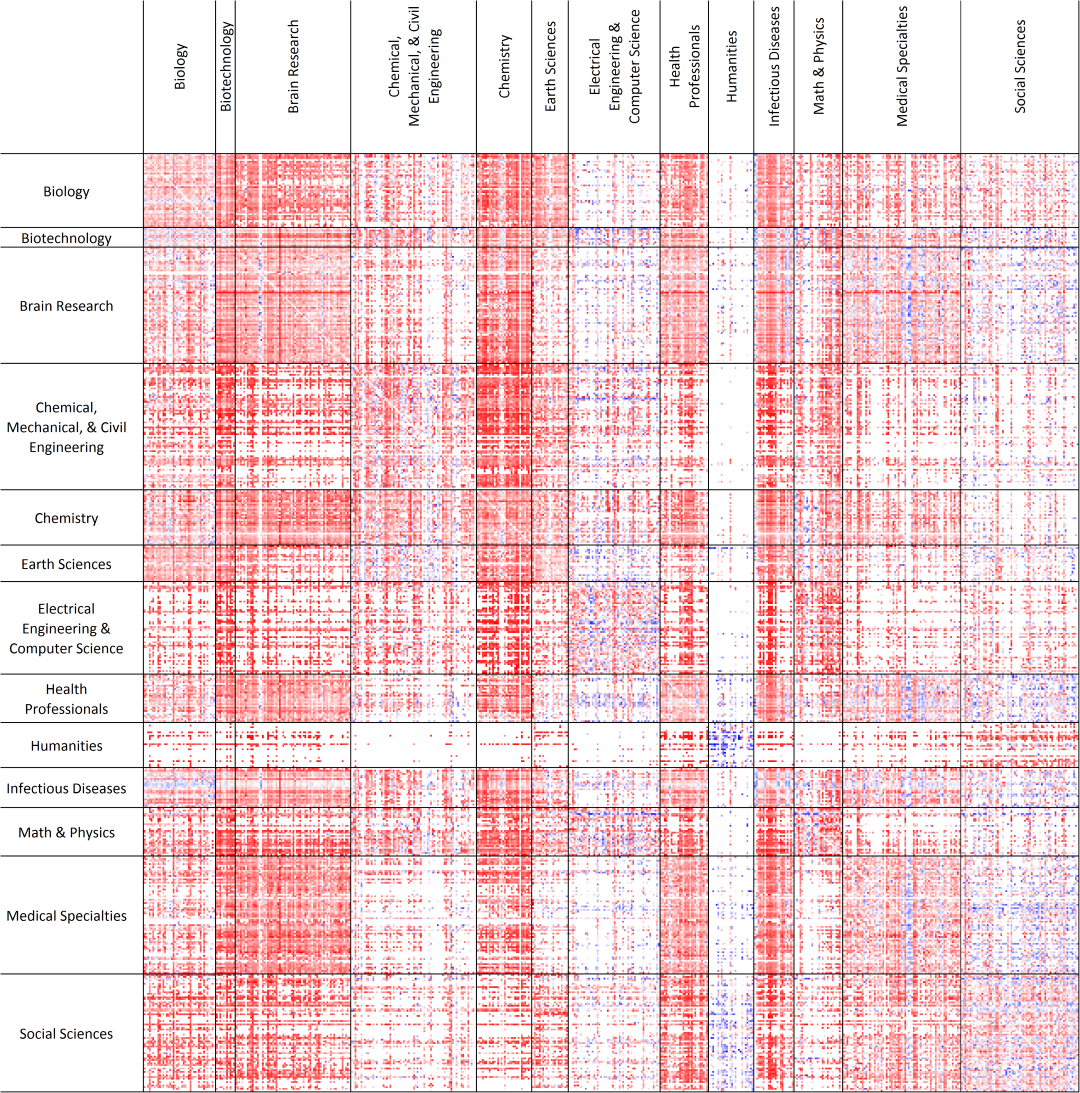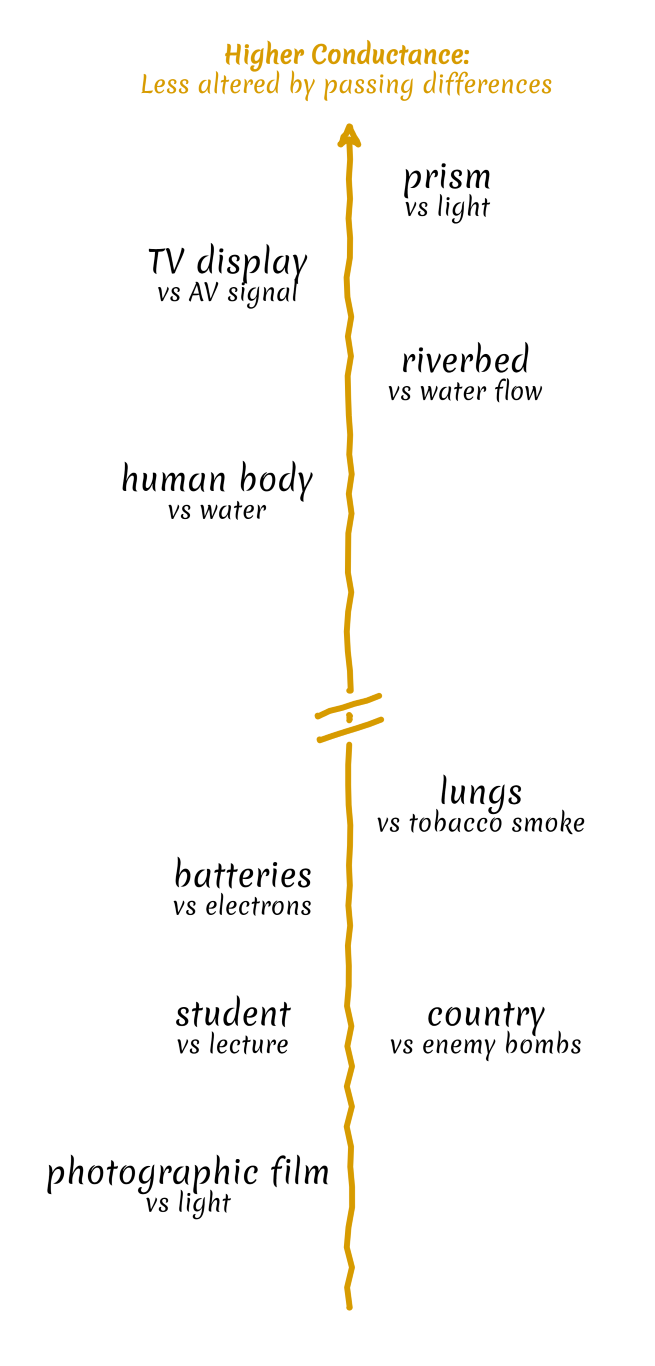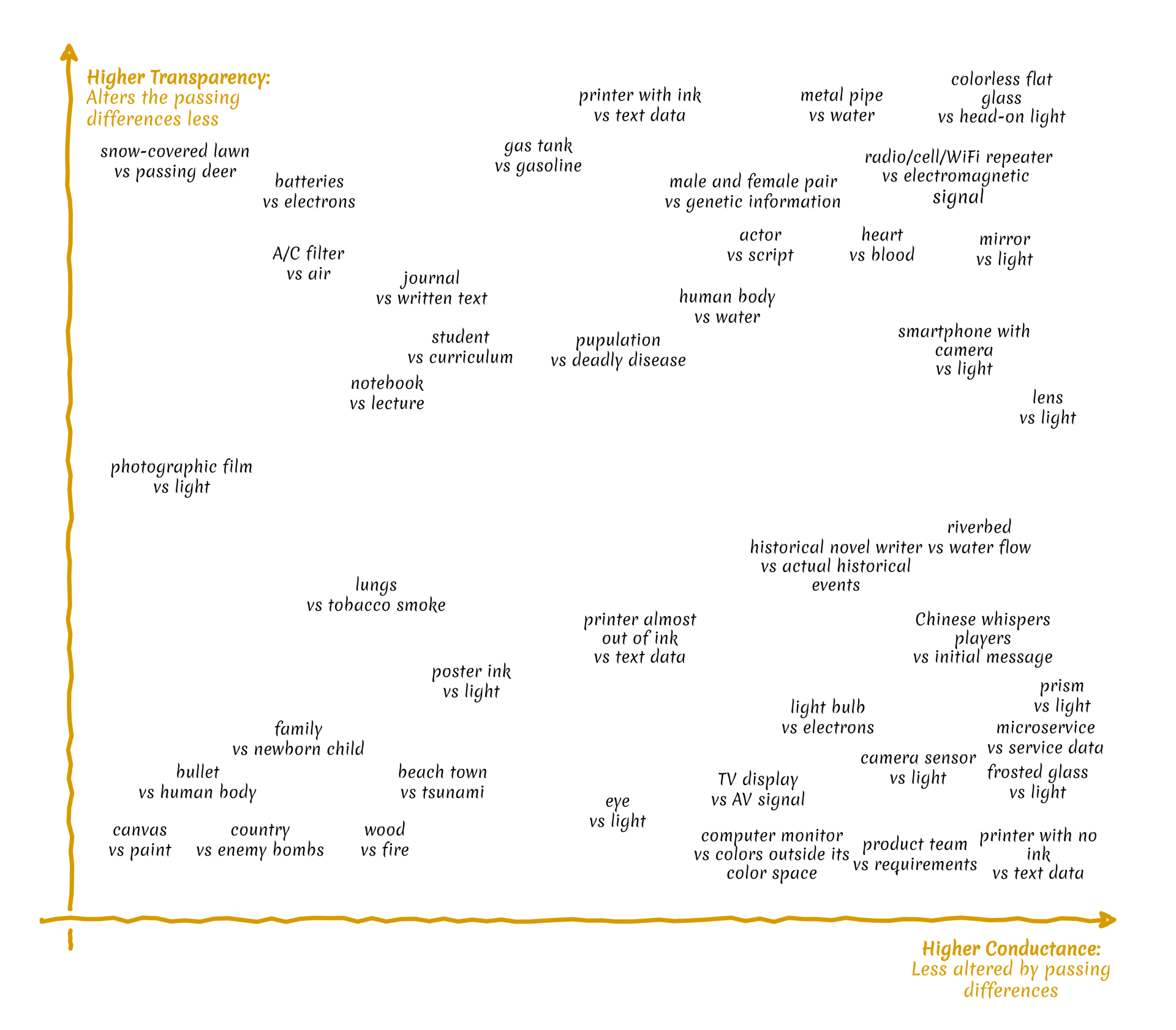When you want to solve a new, hard-to-define problem, chances are old expertise won’t cut it. You either make a groundbreaking new discovery (good luck!) or find new useful ways to combine the things you already know, new connections between things that no one before had thought to be connected.
In 2013 researchers analyzed some 18 million scientific papers to see how they combined ideas. They found that the most impactful—the most cited, i.e. influential—papers were those that mixed ideas from fields of science that few had mixed before. More studies are finding the same kind of insight.

At the same time, human societies—including the scientific community—really want to go in the opposite direction. This is one of the pillars of our civilization: I specialize in this, you specialize in that, and we’ll do a better job than we could have done if we both tried to do everything. It’s easier to go deeper than wider. Before you know it, everyone is digging knowledge holes so deep that they can’t hear each other any more. The things in common between fields of expertise are buried under different jargons, and the specialists create their own mutually-exclusive mental models.
Here we have a tension. On the one hand, it’s more efficient and easier to have people go all-in on separate things. On the other hand, bridging between different disciplines seems to be the thing we need the most right now.
How do we strike a balance between these two forces? I wish I knew! It’s a big question and I’d rather tackle it in small steps. I’d rather take it here in a playful way.
One way to build the missing bridges is to see the universe as made up of differences that ripple in all directions, and to study the inter-connectedness of the universe, and to treat things as systems. A system is such a general concept that virtually anything can be described in those terms. Systems thinking is a natural bridge-building tool.
Let’s see that power in action with a little exercise. What happens when you look at systems not in the details of their operations, but only in terms of what happens when differences pass through them?
A system is a part of the Universal Network around which you (a human with some purpose) have decided to draw a boundary for whatever reason. It is made of differences and it can have a flux of differences coming in from its environment—other systems—and a flux going out.
Take an ecosystem, for example. An ecosystem is made up of a myriad sub-systems, both animate and inanimate: plants, fungi, herbivores and their predators, insects, bacteria, the terrain on (and in) which which they all exist, the water and minerals they metabolize, and so on. They don’t live in a bubble, though. Photons from the sun bombard the ecosystem every day, water flows in from distant mountains, then out to distant seas. Air passes through in a similar way, carrying with it oxygen, carbon dioxide and the seeds and spores of other ecosystems. All sorts of nomadic creatures that don’t live in the ecosystem enter and exit its territory whenever it suits them.
All of this is so intriguing! At this point an ecologist would dive in to study the inner workings of this little world. She’d look at the energy exchange, the food webs, the carbon and nitrogen cycles, and more subtle complexities. The call of the wild (specialized knowledge) is ever-alluring.
But we’re not ecologists, and we’ll bravely resist the urge of plunging head first into the juicy eco-dynamics. Behold our glorious model of reality:

Neat! This is all we need, because we’re going to make a catalog of all sorts of systems. It’s an intentional oversimplification, a trick to get out of our innate urge for concreteness for a while. There are two components we can study here: what happens to the system, and what happens to the differences rippling across it.
First, let’s focus on the system itself. As differences pass through it, a system might change. How much it changes depends, of course, both on the system and on the kind of differences that traverse it. An ecosystem is very good at remaining more or less unchanged under an intermittent flow of rainwater, but it won’t be unchanged if a huge wildfire enters it, dragged by the wind.
Another example is a vase. It will be highly resilient to, say, the changes in room temperature. Not so much to a cat’s paw.
To me, a system’s property of being more or less affected by the things moving through it looks a little like the property of an electric circuit to conduct electricity. Some circuits, like cables, are designed to pass electricity around without doing anything with it. Other circuits are meant to be changed by the current: to make a motor spin, for instance.
In a sense, then, every system is like a circuit that carries one kind of difference or another, and it has a difference conductance describing how much the transmission of those differences affect it.
Here are some examples of systems with varying degrees of difference conductance:

On the high-conductance end:
- A prism spreads the light out, but remains intact in the process.
- A TV is unscathed even as it transforms the signal (for example, HDMI) into images.
- Flowing water has only a tiny effect on the river’s shape on human time scales.
- The human body can survive a cup of water just fine (I’ve heard). But depending on the quality and quantity of the water, over time it can cause side effects like kidney stones, cognitive differences, and other changes in the metabolism. So we can think of the body as being slightly less than perfectly conductive of water.
On the low-conductance (=high-resistance) end:
- Tobacco smoke passing through a smoker’s lungs will leave a lot of tar and chemicals behind, with well-known health consequences.
- A battery’s internal structure, and thus its performance, degrades gradually as electrons pass through it.
- A student takes in the words and pictures provided by the teacher and comes out of the lecture changed by the new knowledge. Yeah, that’s the idea.
- A country bombarded by a military enemy remains deeply scarred by the violence of that input, both physically and socially.
- Old-style photographic film is explicitly designed to be changed permanently by incoming light.
In this way, any system can be roughly positioned somewhere on the same scale. There are no barriers between disciplines here. We can do this with anything that we can give a clear enough name to.
In case it weren’t clear, this is far from an exact science. It’s about as exact a science as pointing at stars and saying “that one is bigger than that other one, and more reddish!” I don’t know of any way to accurately measure “difference conductance”, and even the relative positioning of systems with similar conductance depends a lot on the definitions and assumptions that we use. But the mere attempt at doing it is an exercise in borderless system-centric thinking.
The second thing we can study about the oversimplified system diagram above is what happens to the differences coming in and out. They can change, too. In that sense, systems have another property, similar to how different kinds of glass can be better or worse at letting light through: difference transparency.
Some systems let the differences out almost exactly in the same form as they were when they got in. Perfect transparency isn’t possible, because some interactions must be happening in order for us to say that the differences got in. But they can get very transparent indeed, especially when we look at the subsets of differences that we care about.

On the high-transparency end:
- Colorless, flat glass as used in modern windows is pretty darn transparent for visible light, especially the light that is coming in perpendicularly.
- The whole point of a telecom “repeater” is to be as transparent as possible to the information entering it. Radio repeaters, cellphone data repeaters, Wi-Fi repeaters, they all have advanced tech built into them to make sure that no data is lost in transit.
- A good mirror, like glass, can emit light patterns that look almost exactly like those that entered it. But the transmission is less efficient than plain glass, and the direction of the outgoing light is reversed.
- A camera-equipped modern smartphone can use its screen to emit very good—if imperfect—replicas of the light patterns that entered it when you closed the shutter.
On the low-transparency (=high-opacity) end:
- A historical-novel writer might do a lot of research about past events and people and strive to be as accurate as possible, but the stories he ends up writing will inevitably be highly modified versions of reality.
- When you play a Chinese whispers game with a group of friends, the fun is in how the initial message ends up hilariously bungled up at the end of the chain.
- The TV mentioned in the conductance examples is very opaque to the AV signals that pass through it. In fact, those signals never come out again in that shape, and are instead turned into patterns of colored pixels on the screen.
- Frosted glass may transmit the photons to the other side, but it destroys the images in the process.
(Of course, most things are even more opaque than frosted glass, e.g. a 2-meters-thick wall of lead vs visible light. But those are the uninteresting examples in this story.)
With a little artistic license, then, you could say that systems are like glass circuits. They transmit differences more or less well, and they are affected by those differences to various extents. Let’s put those two axes together, and fill the space in with more examples.

The positions of the system-difference pairs are imprecise and rather subjective, because they depend on our fuzzy definitions of the words (here I’m assuming the most common meaning of each word). Please don’t take the exact arrangement of my examples too seriously.
Still, even with all these caveats, I find this arrangement refreshing, almost uplifting.
Any system has a place on this plane in reference to any kind of input, whether artificial or natural, whether simple or extremely complex, regardless of the scientific field studying it. It’s a sort Universal Declaration of Systemic Rights. We, the systems of the Universe, with all the differences that make each of us unique, are all equal in front of the Laws of Causation. Whether you are a human, a progressive web app, a methane raindrop on Titan, a colony of naked mole rats, or Sydney’s transportation system, you and I are brothers and sisters! Nothing fundamental separates us! Nothing can deny us the freedom to mingle with the ripples that wed us to the rest of the Big Network of Existence!
Alright, I’m not going to start a System Liberation Movement just yet. But I think this “glass circuits” framing helps expose the need for more interdisciplinary thinking. The social drive for specialization, necessary and inevitable as it is, shouldn’t make us oblivious to all the parallels and analogies that exist between disparate contexts. The chart above makes you ask some interesting questions, like:
- Why do engineers put so much effort into pushing batteries and air filters more towards the right side of the plane?
- What did we gain and lose by moving from photographic film (middle-left of the chart) to digital camera sensors (lower-right)?
- In what ways is a software microservice like a light-splitting prism or a Chinese whispers game?
The idea of “glass circuits” is too limited to do much with it in practice, beyond making my point. Which is: such questions are the building blocks of the bridges we need to be raising. The trend is promising. Several (small) groups of researchers and some institutions have committed to blurring the borders between the realms of knowledge. They are looking at things with the same level of abstraction (though not, perhaps, with the same metaphor). How do we get more people to do that? ■